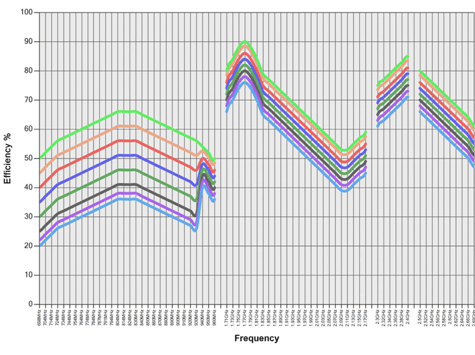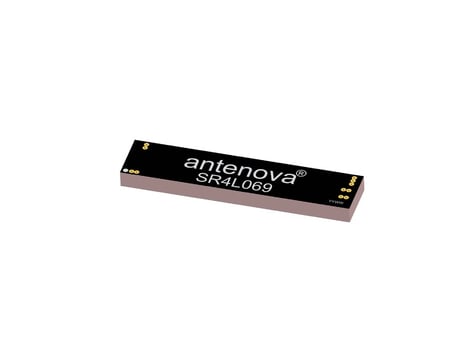Many expect 5G to radically change the way that businesses, industry and society operates. The Internet of Things (IoT) has a significant role to play. But the story behind why 5G will transform the IoT is often mistold.
Unlike ‘beefier’ 5G applications, like virtual reality, 4K streaming and cloud services, the benefits to IoT are very different. Take the automotive industry, where the reduced latency offered by 5G could enable smarter vehicles. For the smart grid, greater coverage depth will enable the proliferation of more sensors in hard-to-reach places. Faster connectivity speeds will even make connected factories far more productive.
Each of these use cases benefits uniquely from 5G. But while the IoT is diverse, every product shares a component: an antenna. And, increasingly, lots of them. When you’re going about the process of selecting antennas, where do you look and what should you be thinking about to maximise performance?
Think bigger with 5G antennas
Over the decades, antennas have shrunk. Some are just the size of a fingertip and fit tidily into the corner of a circuit board with great performance. With 5G antennas, the status quo is about to be disrupted. The specifications for the fifth-generation of wireless technology are forcing antenna manufacturers to reconsider their chip designs and accelerate innovative projects to produce antennas.
mmWave
Wavelengths for 5G frequencies can be as much as 100x the size of today’s 4G and WiFi networks. To be compatible, antennas need to adapt to support these frequencies, which can reach 300 GHz. Simply, these antennas need more material to transmit and receive efficiently as these frequencies.
MIMO
To benefit from any significant increase in data throughput, devices need to utilise MIMO. Using multiple input antennas and multiple output antennas, 5G relies upon devices scaling up the volume of antenna hardware to enable faster throughput.
As a mainstay technology, MIMO designs introduce far more complexity to projects. And they have a significant impact on the designs of devices and the antennas that form them. For one, the antennas need to be larger, as does the circuit board real estate required by them.
To perform well, antennas need to be at least a quarter size of the wavelength of operation. Chip antennas use a ground plane (often PCB) to constitute part of the antenna. This means that not only is the component larger, but the ground plane space will also need to be large.
Efficiency and performance
As innovative as new antenna designs are, they still must obey the laws of physics. Using complex 3D structures and the use of ground planes, antenna chips have been able to shrink. A 5G device operating on band 71 would require a gargantuan 121mm of ground plane length to operate well. As 5G uses longer wavelengths, the amount of ground plane space has grown.
Minimum recommended ground plane lengths
| Technology | Recommended ground plane length |
| 5G (B71) | 121 mm |
| 4G (B12) | 107.3 mm |
| 4G (B5) | 90.59mm |
New wireless technologies, using longer wavelengths, require more ground plane space.
Ease of integration
With the challenges and complexity that comes with 5G designs, finding and integrating an antenna is a vital step in the design cycle.
Each antenna varies in its best placement, required ground plane length, preferred orientation and application. Each of these considerations are especially important, given mobile operators will be assessing devices with the same stringency as they have done with less complex legacy cellular technologies.
When devices are particularly small, it's helpful to consider the antennal, its placement and requirements first. Given the compact nature of IoT devices, it can prevent many of the common problems that can cause project delays.
Finding the right antenna can significantly smoothen this process. It can mean that you can choose an antenna that fits your design, then tune it optimally for its operating environment.
In the case of off-the-shelf solutions, they can save designers time and money while guaranteeing strong levels of performance. With more bespoke solutions, the advanced RF expertise required to design and integrate these solutions well is prohibitive.
Counting down to 5G in 3, 2, 1…
The complexity and performance requirements of 5G make embedded chip solutions an easy choice for designers. Not only are they easier to integrate, but they can also make a significant difference when attempting to certify a device for use by network carriers.
Antenova’s RF solutions provide high levels of performance in the most compact form possible. All of our embedded antennas are provided in tape and reel, to reduce the cost of manufacturing processes – helping you save time and money.
Lepida, our new embedded 5G antenna, offers high levels of performance within a compact form. Perfect for devices that are focused on achieving high levels of performance in the most compact form possible. It’s the first of Antenova’s 5G antenna products, with more innovative solutions in the pipeline. Keep your eyes peeled.




